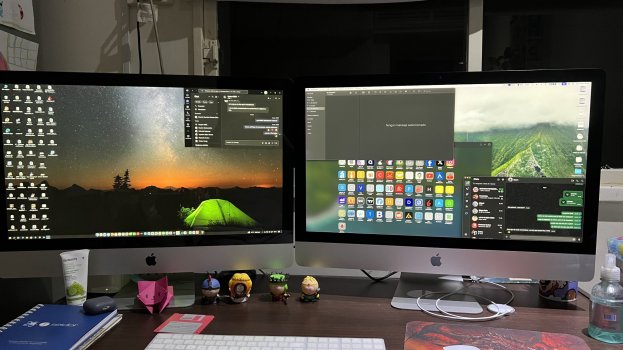I just switched the power supply lines to pin 1 and 11 (with pin 6 and 7 permanently connected) on the original Apple PSU. The flickering isn't completely gone, but I have the impression that the brightness is now even higher than the iMac 2011 display when fully maxed out. Hence, I used the advanced settings in the Monitor control app to limit DDC min (!) (because of the inverted slider) to value 50. This way, the two screens have the same brightness level without flickering. I have a wifi switch with an integrated ammeter connected to the power line of the monitor. Since in "power save" mode the system draws 0,0W I will most probably just leave it like that.
A great advantage of using DDC controls is that when the brightness is dimmed, also power consumption decreases. It now ranges from app. 55W when lowest to app. 90W when maxed out.
As requested, I measured the voltages coming from the China board now at the black plug:
BL_ON: 0,03V
+: 12,08V
PWM: 5,03V
Unfortunately, I only have a simple multimeter and could thus not measure the frequency going to the PWM pin.
Now, however, comes a big surprise. When I had the screen opened, I connected the Apple 2010 inverter (V267-602HF) again. And, very strangely, it now also worked. The OSD message (No Cable) instantly popped up with full brightness. I can only explain this by the now properly soldered cables between the China board and the Apple inverter. When I tested this out in the first place, I had the connection done only with some small pins in the plug, which maybe did not have proper contact. I did not want to cut the China connection cable before I knew it would surely work.
View attachment 2521432



